Background
He was born in Washington, D. C. , the son of Edward Allen Fay, a Dante scholar, and Mary Bradshaw.


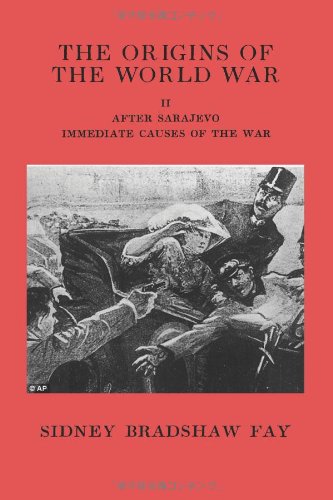
(This is a two volume work. Volume 1 is "Before Sarajevo -...)
This is a two volume work. Volume 1 is "Before Sarajevo - Underlying Causes of the War". Volume 2 is "After Sarajevo - Immediate Causes of the War". By "Before Sarajevo", it is meant before the assassination in Sarajevo on 28 June 1914 of Archduke Franz Ferdinand of Austria, the heir to the throne of Austria-Hungary. This volume two starts with the Serbian Plot to Assassinate the Archduke and continues to the mobilizations in France and Germany on August 1, 1914. Unlike some other authors, Sidney Fay believes that the assassination of the Archduke was part of the plot by the Black Hand. Others, however, state that the assassination was a coincidence caused by a wrong turn by a driver and that there is no proof that the assassin was part of the Black Hand. This book deals with the incredible series of events in which in only 37 days after the assassination of the Archduke and his wife Sophie, Germany invaded both Belgium and France. These events have ever since been studied by career diplomats, seeking to learn the reasons for this so as to try to prevent another pointless war like this one from happening.
https://www.amazon.com/Origins-World-War-Sarajevo-Immediate/dp/4871878783?SubscriptionId=AKIAJRRWTH346WSPOAFQ&tag=prabook-20&linkCode=sp1&camp=2025&creative=165953&creativeASIN=4871878783
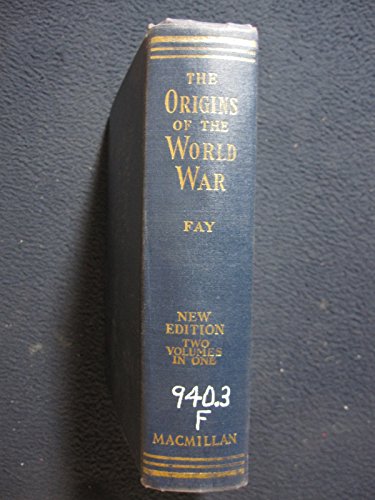
(copyright 1930 The writer has no political motive but sim...)
copyright 1930 The writer has no political motive but simply to carry out the proper task of the historian - to tell how it really came about.
https://www.amazon.com/origins-world-war-Sidney-Bradshaw/dp/B00085B4TI?SubscriptionId=AKIAJRRWTH346WSPOAFQ&tag=prabook-20&linkCode=sp1&camp=2025&creative=165953&creativeASIN=B00085B4TI
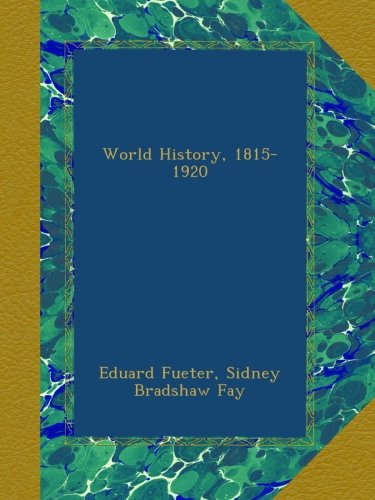
(This book was originally published prior to 1923, and rep...)
This book was originally published prior to 1923, and represents a reproduction of an important historical work, maintaining the same format as the original work. While some publishers have opted to apply OCR (optical character recognition) technology to the process, we believe this leads to sub-optimal results (frequent typographical errors, strange characters and confusing formatting) and does not adequately preserve the historical character of the original artifact. We believe this work is culturally important in its original archival form. While we strive to adequately clean and digitally enhance the original work, there are occasionally instances where imperfections such as blurred or missing pages, poor pictures or errant marks may have been introduced due to either the quality of the original work or the scanning process itself. Despite these occasional imperfections, we have brought it back into print as part of our ongoing global book preservation commitment, providing customers with access to the best possible historical reprints. We appreciate your understanding of these occasional imperfections, and sincerely hope you enjoy seeing the book in a format as close as possible to that intended by the original publisher.
https://www.amazon.com/World-History-1815-1920-Eduard-Fueter/dp/B00ASZNWT8?SubscriptionId=AKIAJRRWTH346WSPOAFQ&tag=prabook-20&linkCode=sp1&camp=2025&creative=165953&creativeASIN=B00ASZNWT8

(Volume 2 of Fay's classic on the origins of World War I.)
Volume 2 of Fay's classic on the origins of World War I.
https://www.amazon.com/Origins-World-War-Sidney-Fay/dp/B000SHJ22C?SubscriptionId=AKIAJRRWTH346WSPOAFQ&tag=prabook-20&linkCode=sp1&camp=2025&creative=165953&creativeASIN=B000SHJ22C
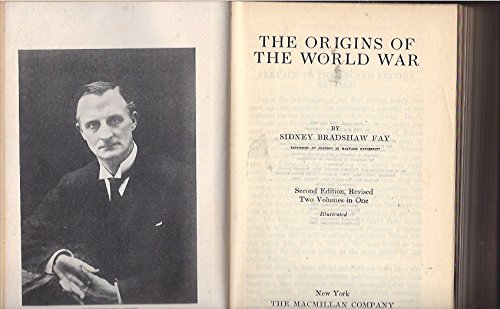
(!!!COMES WITH TRACKING!!! RARE RED HADCOVER 578 PAGES CLE...)
!!!COMES WITH TRACKING!!! RARE RED HADCOVER 578 PAGES CLEAN HARD TO FIND AND DIFFICULT TO OBTAIN Minor shelf wear/soft edge on cover corner/back and or corner page(s). Pages clean and crisp! ZERO PEN MARKS Cant beat the Price! All types of Shipping Available!! Great Book or $ Money $ back!!! Any Questions feel free to emailS
https://www.amazon.com/Origins-World-Second-Revised-Volumes/dp/B001J5IY2Q?SubscriptionId=AKIAJRRWTH346WSPOAFQ&tag=prabook-20&linkCode=sp1&camp=2025&creative=165953&creativeASIN=B001J5IY2Q
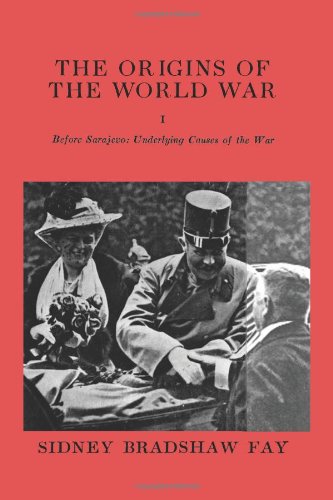
(This is the authoritative work on the causes of World War...)
This is the authoritative work on the causes of World War One. Perhaps it would be better top say that this is one of the authoritative works, now that there are many books with almost exactly the same title. This is a book on the causes of the war, not on the war itself. Sidney Fay researches a different conclusion than almost every other researcher on the Causes of the War. Whereas others state that the War was the fault of Germany, who attacked France through Belgium on August 4, 1914, Sidney Fay asserts that Germany was forced to attack because of the circumstances it faced at the time. Sidney Fay says that Austria, Serbia, and Russia were primarily to blame for the war. Few agree with him, but on one point, all authorities agree. At the beginning, all sides believed that the war would be swift and successful. None of the countries had any idea that the war would last four years with 15 million people killed. This book is divided into two volumes. Volume One is "Before Sarajevo". Volume Two is "After Sarajevo". By "Before Sarajevo", it is meant before the assassination in Sarajevo on 28 June 1914 of Archduke Franz Ferdinand of Austria, the heir to the throne of Austria-Hungary.
https://www.amazon.com/Origins-World-War-I/dp/092389134X?SubscriptionId=AKIAJRRWTH346WSPOAFQ&tag=prabook-20&linkCode=sp1&camp=2025&creative=165953&creativeASIN=092389134X

(A wiork of enduring scholarship, Signey Bradshaw Fay's cl...)
A wiork of enduring scholarship, Signey Bradshaw Fay's classic account of the causes of World War I has remained definitive book its subject. This first volume provides a thorough and objective analysis that reveals the underlying causes of the Great War. Ranging from the consequences of the Franco-Prussian War to the numerous secret alliances, every significant diplomatic maneuver is brought to light with insight and documentation. Of outstanding importance is the author's detailed account of the Balkan turmoil. Volume I, Underlying Causes of the War, and Volume II, Immediate Causes of the War, may be read independently; taken together they represent a major accomplishment in historyical literature.
https://www.amazon.com/Before-Sarajevo-Origins-World-Volumes/dp/B000NX5H1G?SubscriptionId=AKIAJRRWTH346WSPOAFQ&tag=prabook-20&linkCode=sp1&camp=2025&creative=165953&creativeASIN=B000NX5H1G
He was born in Washington, D. C. , the son of Edward Allen Fay, a Dante scholar, and Mary Bradshaw.
He received an M. A. in 1897 and studied at the Sorbonne in 1898.
After bicycling from Paris to Berlin, Fay enrolled for three semesters at Berlin. Using Brandenburg and Hanoverian archives, he wrote a dissertation on the League of Princes, Frederick the Great's defensive alliance against Emperor Joseph II. Fay mailed the dissertation to Cambridge and received a Ph. D. from Harvard in 1900.
In 1914 Fay became a professor at Smith College.
After two years as a teaching fellow, he went to Dartmouth, where he remained until 1914.
Fay became an active citizen of Hanover, New Hampshire, serving on the school board and as coeditor of the town's early records.
In 1898 he had published in the American Historical Review (AHR) a prizewinning essay on Napoleon's abduction and execution of the duc d'Enghien, and at Dartmouth he became a prolific reviewer of works on European history, particularly in the AHR and the Nation.
In 1914 Fay became a professor at Smith College. He founded with John Spencer Bassett the Smith College Studies in History, contributing in 1916 an essay on the early Hohenzollern household and administration; and a year later he published in the AHR a study of the creation of the standing army in Prussia.
But World War I drew him toward contemporary history. He strongly opposed German policy from 1914 to 1918, favored American entry into the war, and supported the breakup of Austria-Hungary. The first of his many studies of the war's background appeared in the AHR in October 1918; using the recently published "Willy-Nicky correspondence, " he criticized sharply the Kaiser's naive attempt at a Russian alliance in 1904 and 1905.
In reports to the House Commission at the Paris Peace Conference, he recommended independence for Poland and Finland and autonomy for the Baltic peoples and the Ukraine, pending later federation with the Soviet Union.
As documentary publications continued to pour forth, Fay grew increasingly dissatisfied with the accepted versions of the war's genesis.
In 1920 and 1921 he published in the AHR three articles entitled "New Light on the Origins of the War, " dealing with the events of July and August 1914. He soon argued that Article 231 of the Versailles Treaty, which attributed the cause of the war to "the aggression of Germany and her allies, " was historically untrue in its implication of Germany's sole guilt.
His reviews became a continuing commentary on the massive new evidence on prewar diplomacy.
In 1927 he interviewed many participants in the events of 1914, including the Kaiser and Admiral von Tirpitz. A year later he published The Origins of the World War. The book was widely read, and many scholars greeted it with enthusiasm; a French translation, which appeared in 1931, elicited some disagreement.
Some otherwise favorable reviews, notably in the AHR and the Times Literary Supplement, criticized Fay's strictly documentary approach and his neglect of such imponderables as popular emotions. Recent scholarship indicates that Fay underestimated German pressure on Austria to act against Serbia and overestimated Germany's last-minute efforts to avert general war.
As an internationally acclaimed authority on diplomacy, Fay was a natural choice for a new joint Harvard-Radcliffe professorship. He returned to Cambridge in 1929 and became very much a public figure. He lectured, attended conferences, and wrote scores of reviews and articles, especially in Current History. W
ith Hitler's accession in 1933, Fay's concern with contemporary Germany increased greatly. After hoping for the moderation of Nazi policies, he firmly opposed the regime, without identifying Germans with Nazis, and without changing his views about World War I.
In the mid-1930's his brand of revisionism--though he dissociated himself from the extreme revisionists of left or right--became widespread. Young American scholars especially favored his views, just as contemporary politicians reflected American disillusionment with foreign involvements. But with the outbreak of World War II, Fay favored aid for the Allies and American intervention, if necessary.
He argued that 1939 was not 1914; that the old, though fragile, unity of the Euro-American world was lost; and that Hitler's Reich was in essence different from and outside of our civilization. However, Fay maintained that a decent Germany might be restored and he opposed destructive peace measures that would prevent Germany's revival.
After 1945 he favored Adenauer's policies, the Schuman plan, and the emergence of a real European community.
Fay retired from Harvard and Radcliffe in 1945, spent a year as visiting professor at Yale, and was elected president of the American Historical Association for the 1946-1947 term.
He continued his scholarly activities and was instrumental in founding the Radcliffe Seminars, a program of adult education in which he taught for several years.
He died in Lexington, Massachussets Fay's Origins of the World War sparked considerable controversy but was for years the foremost scholarly treatment of the subject.
Although he published no other work of similar scope, his many articles, his participation in the editing of the Guide to Historical Literature (1931), and The Rise of Brandenburg-Prussia to 1786 (1937) were important contributions. His stance is supported by several modern-day scholars, such as Christopher Clark, though it remains controversial. Fay left Harvard University (Ph. D. 1900) to study at the Sorbonne and the University of Berlin. He taught at Dartmouth College (1902–14) and Smith College (1914–29) and, after the publication of his major book, at both Harvard and Yale University. Fay's conclusion was that all the European powers shared in the blame, but most of all the system of secret alliances that divided Europe after the Franco-Prussian War into two mutually suspicious camps of group solidarity, Triple Alliance against Triple Entente (Fay's student Allan B. Calhamer, would later develop and publish the game Diplomacy, based on this thesis) but that Austro-Hungary, Serbia and Russia were primarily responsible for the immediate cause of war's outbreak. Other forces besides militarism and nationalism were at work: the economics of imperialism and the newspaper press played roles.
(!!!COMES WITH TRACKING!!! RARE RED HADCOVER 578 PAGES CLE...)
(This book was originally published prior to 1923, and rep...)
(copyright 1930 The writer has no political motive but sim...)
(A wiork of enduring scholarship, Signey Bradshaw Fay's cl...)
(This is the authoritative work on the causes of World War...)
(Volume 2 of Fay's classic on the origins of World War I.)
(This is a two volume work. Volume 1 is "Before Sarajevo -...)
Fay, a wise and gracious man, was loved and respected by students and colleagues alike.
He married Sarah Proctor in 1904. They had three children.
